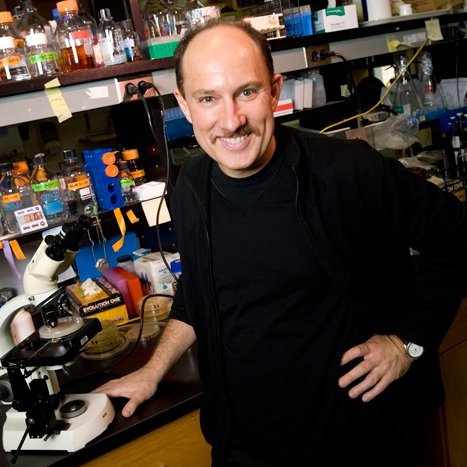
Heitman lab at Duke
@DukeHeitman
Followers
2K
Following
855
Media
510
Statuses
1K
We're the Heitman lab at @DukeMGM. We're interested in sexual reproduction and the emergence and evolution of microbial pathogens. Account run by lab members.
Durham, NC
Joined February 2019
Excited to share our new preprint on confirming the essentiality of four genes in mating-type locus in Cryptococcus neoformans! MYO2, although predicted to be essential, is dispensable for cell viability and important for cytokinesis and pathogenicity.
biorxiv.org
Fungal sexual reproduction is controlled by the mating-type ( MAT ) locus. In contrast to a majority of species in the phylum Basidiomycota that have tetrapolar mating-type systems, the opportunistic...
0
7
19
In the latest @PNASNews , we discovered that RNAi-loss is more common than expected in the global population of Cryptococcus neoformans, driving distinct evolutionary paths: hypermutation via transposon accumulation or survival without hypermutation.
0
6
14
Check this out!
Check out our latest preprint on RNAi epimutations!🧬 https://t.co/Ju7jj1vD7x Our team has shown how spontaneous RNAi-based epimutations conferring drug resistance in a human fungal pathogen are transmitted to the next generation following sexual reproduction. More details? ▶️🧵
0
0
2
🚨New Preprint🚨 Can signaling cascades modulate expression status even before turning genes on and off in the nucleus? We studied and found a direct role of calcium-responsive calcineurin signaling in RNAi at P-bodies, governing gene expression levels. https://t.co/md26o4Budy
0
6
20
The latest @PLOSPathogens Pearls article by @VikasYadavSci is now out. He reviews the essential roles of calcineurin in the virulence of #fungal pathogens of animals and plants and discusses what future studies should focus on to target this Achilles heel. https://t.co/UzjnFUHAZo
0
6
26
We wrote a review on the importance of stress-responsive calcium-calcineurin signaling in fungal pathogens and how understanding this signaling cascade can be extremely fruitful. Read on - Calcineurin: The Achilles’ heel of fungal pathogens https://t.co/eTRC6Pn7zr
0
5
40
The study highlights the importance of active surveillance of IFDs and the collaboration between mycologists and clinicians, and calls for research on innovative approaches to diagnostic tools and new antifungals that can improve the global survival rates associated with IFDs.
0
0
1
While the overall incidence of major IFDs and their mortality rate remained relatively stable, the study observed increased fungemia in older population (mainly due to infections by C. albicans), as well as concurrent IFD infections.
1
0
0
Using surveillance data collected by the French National Reference Center for Invasive Mycoses and Antifungals, the study provides an updated comprehensive overview on the epidemiology of IFDs in France.
1
0
0
Check out a recent report in mBio by the French Mycoses Study Group on invasive fungal diseases (IFDs) in France.
journals.asm.org
The epidemiology of invasive fungal diseases (IFDs) is hard to delineate given the difficulties in ascertaining the diagnosis that is often based on the confrontation of clinical and microbiological...
1
1
9
The study highlights the importance of active surveillance of IFDs and the collaboration between mycologists and clinicians, calls for research on innovative approaches, include diagnostic tools and new antifungals, that can improve the global survival rates associated with IFDs.
0
0
6
While the overall incidence of major IFDs and their mortality rate remained relatively stable, the study observed increased fungemia in older population (mainly due to infections by C. albicans), as well as concurrent IFD infections.
0
0
1
Using surveillance data collected by the French National Reference Center for Invasive Mycoses and Antifungals, a recent report in mBio by the French Mycoses Study Group provides an updated comprehensive overview on the epidemiology of invasive fungal diseases (IFDs) in France.
0
2
6
Fungal Kingdom: Threats & Opportunities welcomes Asiya Gusa (@AsiyaGusa, @DukeU), Kyla Ost (@KylaOst, @CUAnschutz) and Neta Shlezinger (@ShlezingerLab, @HebrewU). https://t.co/0WosN6yBGv
3
8
17
Congratulations to two leading luminaries in fungal genetics, Amy Gladfelter and Regine Kahmann, on their recent election to the American Academy of Arts and Sciences!!! https://t.co/JjVp88OZQr
https://t.co/dGs5HKZhZ3
amacad.org
The Academy has announced the members elected in 2023. The American Academy of Arts & Sciences is both an honorary society that recognizes and celebrates the excellence of its members and an indepe...
0
3
38
Excited to share our new preprint on transitions in mating-type locus chromosomal organization in Malassezia and early steps in sexual reproduction https://t.co/cJ5AmGGKFx. Kudos to @MarcoACoelho1, @giuseppe_ianiri and @MrciaDavidPalm1, and all authors, for their contributions.
0
23
70
An updated version is now available for the study from @magwenelab, which uses the interaction between amoeba and human fungal pathogen Cryptococcus neoformans to test the “accidental pathogen” hypothesis.
biorxiv.org
The “Amoeboid Predator-Fungal Animal Virulence Hypothesis” posits that interactions with environmental phagocytes shape the evolution of virulence traits in fungal pathogens. In this hypothesis,...
0
4
14
Congratulations to Allan Jacobson and Lynne Maquat who received the 2023 Gruber Genetics Prize for landmark studies on nonsense mediated mRNA decay. Allan founded PTC Therapeutics which developed drugs used globally to treat human genetic diseases.
0
1
13
Our review about evolution of sex - "the queen of all problems in evolutionary biology" through a microbial perspective was just published in @PNASNews. @DukeHeitman #fungi #evolution
https://t.co/yLJTFTc8Mj Hope you enjoy reading it!
pnas.org
Almost all eukaryotes undergo sexual reproduction to generate diversity and select for fitness in their population pools. Interestingly, the system...
0
7
31
A microbial perspective on the evolution of sex focussing on variations of sexual reproduction in #fungi is out now in @PNASNews. This is the inaugural article by Joe, as a National Academy of Sciences member. https://t.co/5DSJJQYfhA
0
17
60







